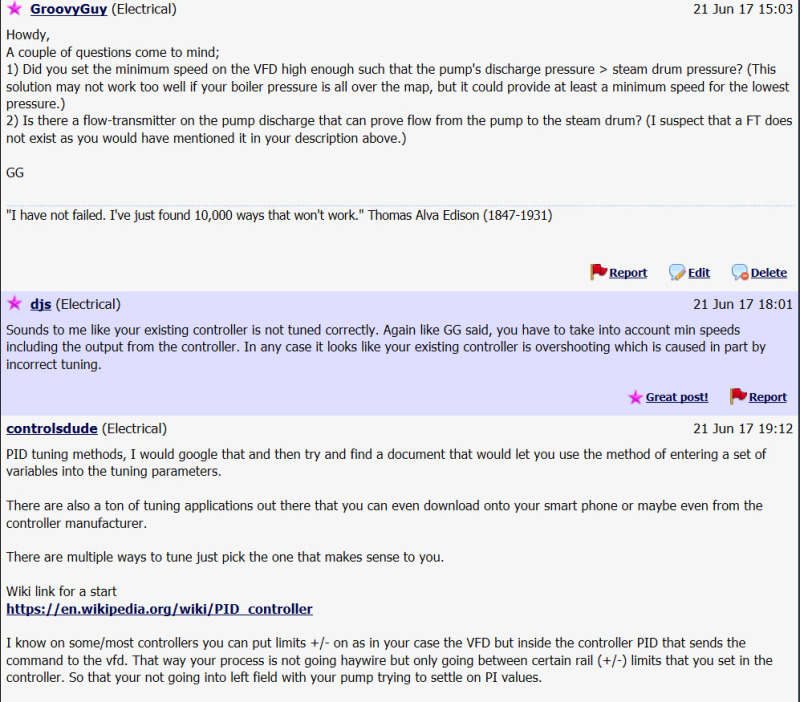-
1
- #1
Good Day
The problem is I have a pressurized boiler and the feed water is pumped into the boiler using a pump which gets its input from a frequency inverter. The frequency inverter gets its input from a controller which monitors the water level in the boiler. The concern however is that the pump is only able to overcome the boiler pressure, hence pump water, into the boiler after a certain frequency, which thus is giving the problem because pump in excessive amounts than is required.
The controller being used is a PI controller. We cannot replace the pump and we need to develop a revised water regulation algorithm. I am working on a model to calculate the expected amount of water to get into the boiler by using a look up table of speed at which pump can pump water versus the boiler pressure. Since I know pump capacity I can then calculate the amount of water which will be pumped in at a frequency at which the pump can overcome the boiler pressure.
Also I can find from a level transmitter the amount of water which has to go into the boiler, hence when water is eventually pumped, I just return the error amount back to the reservoir. We also have a turbine flow meter which measures the amount of water going into the boiler
However I feel that they might be a better and cheaper way of control. Maybe introduce a derivative term.
Can you please help me out on this one.
The problem is I have a pressurized boiler and the feed water is pumped into the boiler using a pump which gets its input from a frequency inverter. The frequency inverter gets its input from a controller which monitors the water level in the boiler. The concern however is that the pump is only able to overcome the boiler pressure, hence pump water, into the boiler after a certain frequency, which thus is giving the problem because pump in excessive amounts than is required.
The controller being used is a PI controller. We cannot replace the pump and we need to develop a revised water regulation algorithm. I am working on a model to calculate the expected amount of water to get into the boiler by using a look up table of speed at which pump can pump water versus the boiler pressure. Since I know pump capacity I can then calculate the amount of water which will be pumped in at a frequency at which the pump can overcome the boiler pressure.
Also I can find from a level transmitter the amount of water which has to go into the boiler, hence when water is eventually pumped, I just return the error amount back to the reservoir. We also have a turbine flow meter which measures the amount of water going into the boiler
However I feel that they might be a better and cheaper way of control. Maybe introduce a derivative term.
Can you please help me out on this one.


![[flame] [flame] [flame]](/data/assets/smilies/flame.gif)